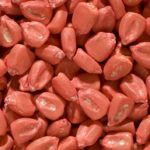Bayer is exiting the seed treatment equipment business in the United States to help the company's finances, according to an email sent to customers that was seen by Reuters on Wednesday.


Bayer committed to seed treatments but won’t manufacture seed treatment equipment, the company said

Fourth state of matter showed to slow growth of fall armyworm, boost plant development


Dry conditions make ideal seeding time difficult to peg

New BASF seed treatment should pack a terminal punch
New BASF seed treatment should pack a terminal punch
If there was such a thing as carefree wireworm days they definitely have become numbered as registration of a new, effective seed treatment developed by BASF has received final registration. Why it matters: The presence of wireworms when sampling, even at low levels, is a potential cause for concern, experts say. BASF announced Oct. 19 […] Read more
Crop disease comes off province's 'zero tolerance' list


More seed treatments are coming in concentrated, ready-to-use, easy-to-handle formats

Treated seed can harm livestock, or contaminate an export load. Dispose with care
